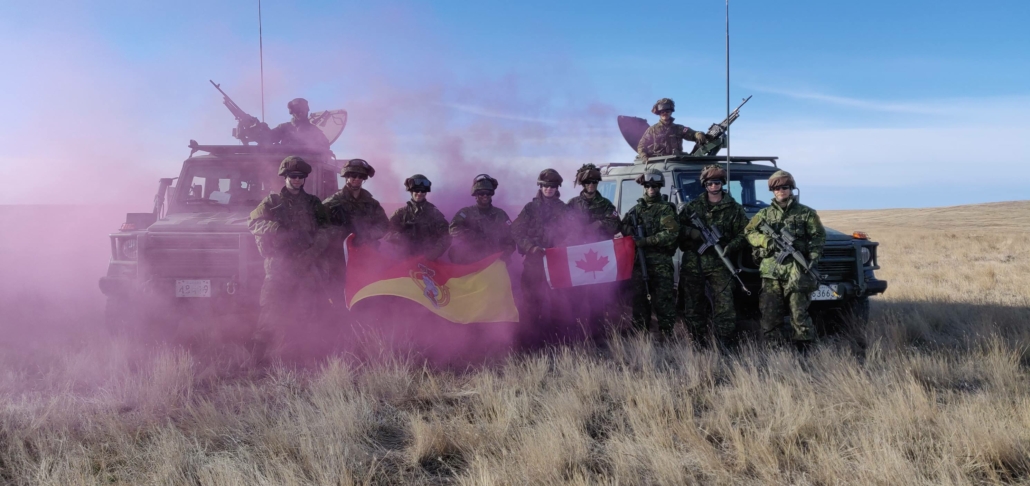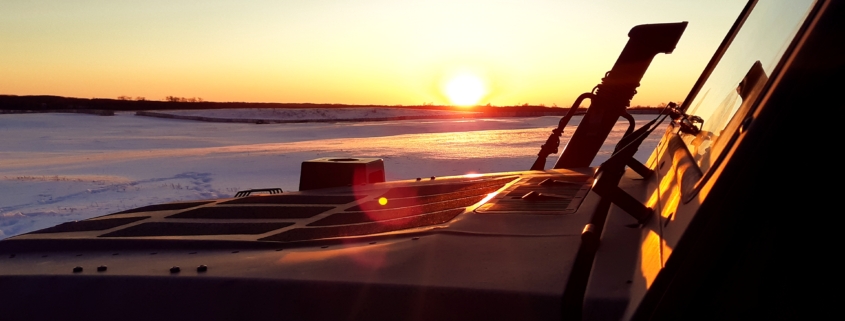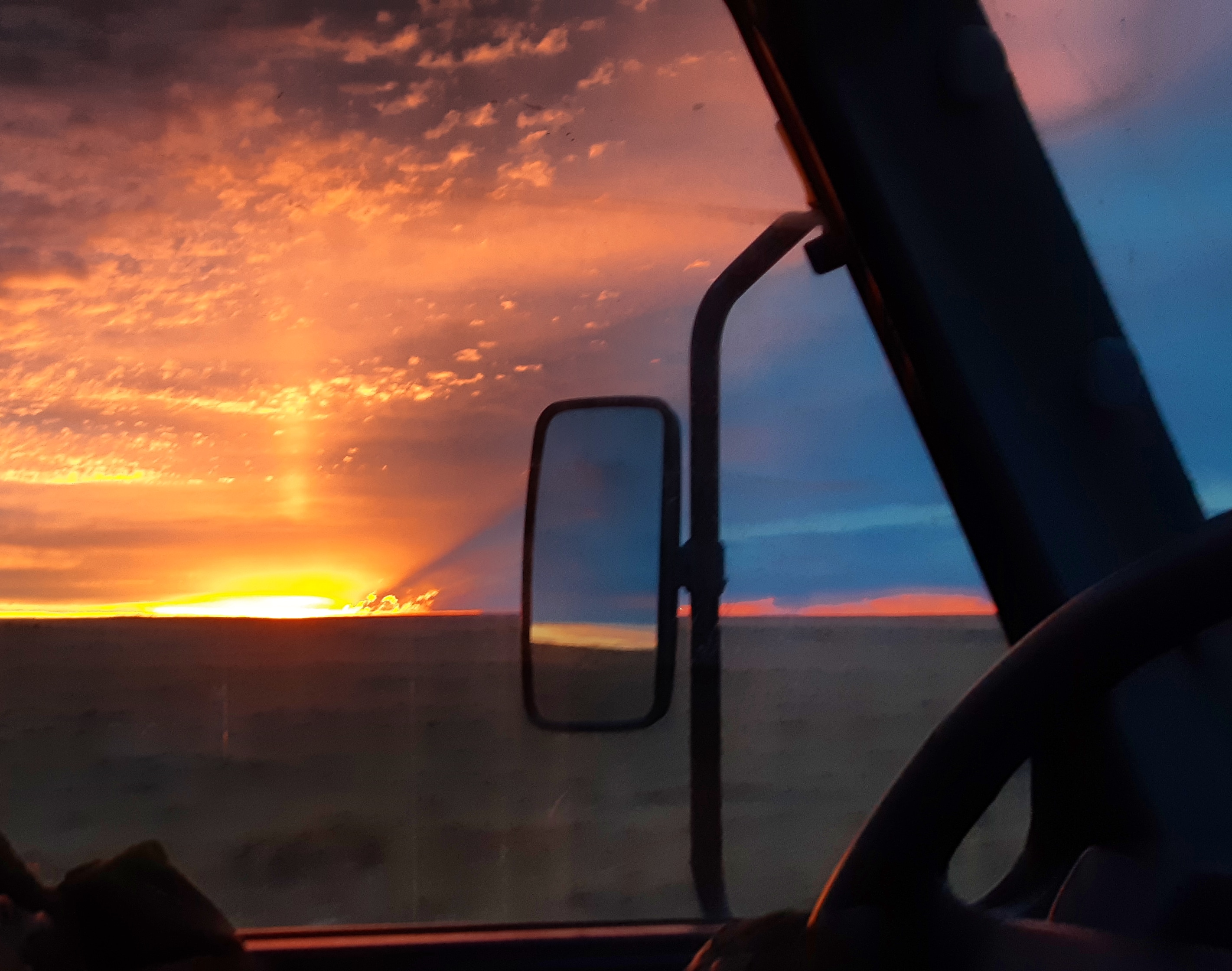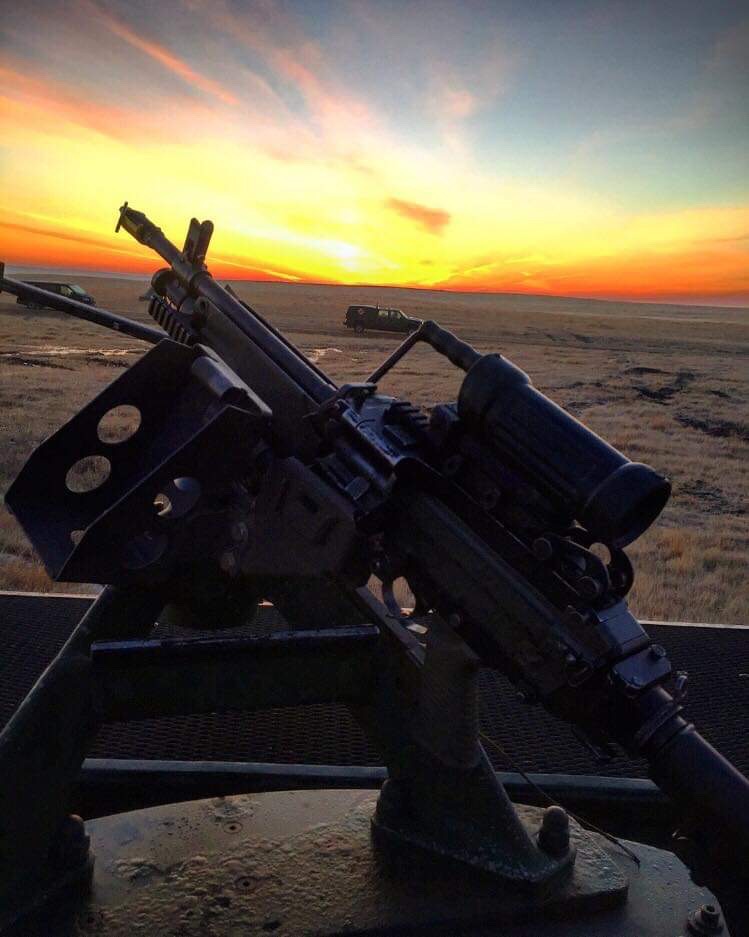Exercise King’s Guard 2019 – Armoured Reconnaissance Crewman Course Exercise (22-24 March 2019)
Over the weekend of March 22-24, the King’s Own Calgary Regiment along with its Developmental Period 1 (DP1) 0037 candidates participated in King’s Guard in CFB Suffield. The main objective of King’s Guard was to train the DP1 candidates in obstacle drills, tactical driving maneuvers, hand signals, navigation, and how to react to contact.
Obstacle drills are done whenever a patrol encounters a situation on a road that is suitable for an enemy ambush or at road intersections. Tactical driving allows the patrol to move to any given position over varying terrain utilizing cover. Hand signals relayed by the gunners allow for the passage of information without using the radio. The less radio communication the better, as it reduces the amount of information the enemy can intercept. Navigation practice was done with map and compass. The “reacting to contact” drill is important since it gives a pre-planned response of enemy engagement. When an attack comes by surprise, the response must be quick and effective to keep both yourself and crew alive and functioning.
With the help of an advance party which assisted the preparation work on Friday, the Regiment was able to leave Calgary for the field by 8pm. After arriving at 00:00hrs, the candidates and the remainder of the Regiment quickly set up tents and went to ground for the night.
The next morning started with quickly getting the vehicles ready. By 08:00hrs all crews and instructors were in their vehicles to begin training. The day began with obstacle drills and instruction on how to properly carry out reconnaissance at road intersections. These drills require the cooperation of two patrols with their respective crew commanders, drivers, gunners, and observers. An observer has the duties of watching a specific arc of vision, act as a sentry, and complete dismounted tasks. All of these soldiers, operating as a team, ensure security during the drill and confirm that the obstacle is safe.
After running a few of the obstacle drills, the candidates moved on to tactical off-road driving. The drivers practised getting to their next position and using routes that provided concealment along the way. Concealment is critical as it limits the vehicle’s visibility to enemy observation and fire. Candidates learned how to drive their route to take advantage of lows in the landscape and avoid hills.
Early afternoon had the candidates practising navigation on foot with map and compass. This is an essential skill that is first learned in basic training but like most skills they require field application. Navigating using the GPS is common practice but, it is much less robust than a map and compass. Knowledge of navigation by map and compass is important since the GPS can be vulnerable to electronic attack, and power systems can fail. The navigation exercise honed skills and ensured confidence in this ability.
Late afternoon consisted of “react to contact” drills. Two different scenarios were completed whereby the patrols were ambushed along a road and another where the patrols were engaged at longer range over open ground. Crews reacted accordingly with patrols bounding across open ground to cover and machines guns firing blank ammunition to suppress and destroy the enemy. In these training scenarios the opposing force is played by other members of the Regiment.
By 20:00hrs it had gotten dark and the candidates were due to begin their night driving exercise. It began with a 20 minute drive along a road with very minimal black out lights. This takes great concentration and confidence as there is very limited light and it restricts your vision to a few meters in front of the vehicle. The return trip was completed with the aid of night vision goggles. While using NVGs, even though the road can be adequately seen, it required the utmost attention and focus on the task at hand. Crew members must be able to perform this task of night driving with minimal to no light. It is essential to remaining undetected during a night move. Using normal headlights at night would make the vehicles easily observable, it is important to move as inconspicuously as possible.
Sunday morning found us back out again by 08:00hrs. This time the candidates were expanding on “react to contact”, bridge obstacle drills, and radio procedure. The patrols and their crews took up position while two dismounted soldiers (observers), moved to the bridge to ensure it was safe for our patrol and others to cross. If contact was made during the drill, all soldiers had to react accordingly to plans already discussed by the crew commander. During the contact, radio calls were made to the Command Post to inform them of the situation and report any casualties sustained.
By 10:00hrs we were packed up and headed back to Calgary. Once we returned to Mewata, the patrols were unloaded and the drivers took the trucks to get a much-needed washing. During this time the remainder of DP1 course and others from the Regiment began cleaning weapons. This was completed by the time the G wagons were returned.
While classroom instruction is essential, these field training exercises are the only way to see how it really works in practice. It helps candidates appreciate and remember how it is done, and why it is done that way. Furthermore, it instills confidence in the equipment, training, leadership, and in the soldiers that work with you in The King’s Own Calgary Regiment.
ONWARD!
DP1 0037 Course Candidates











